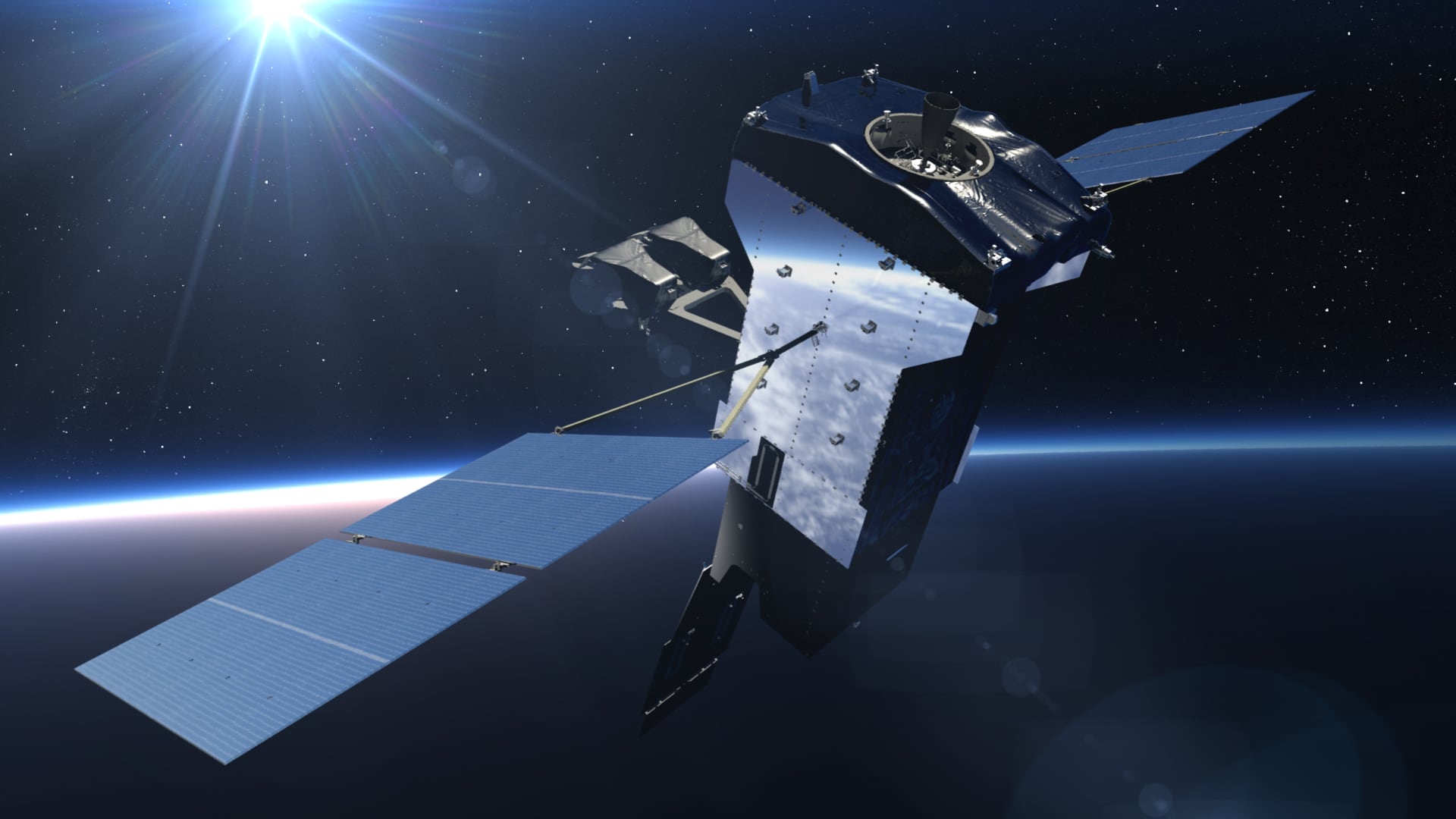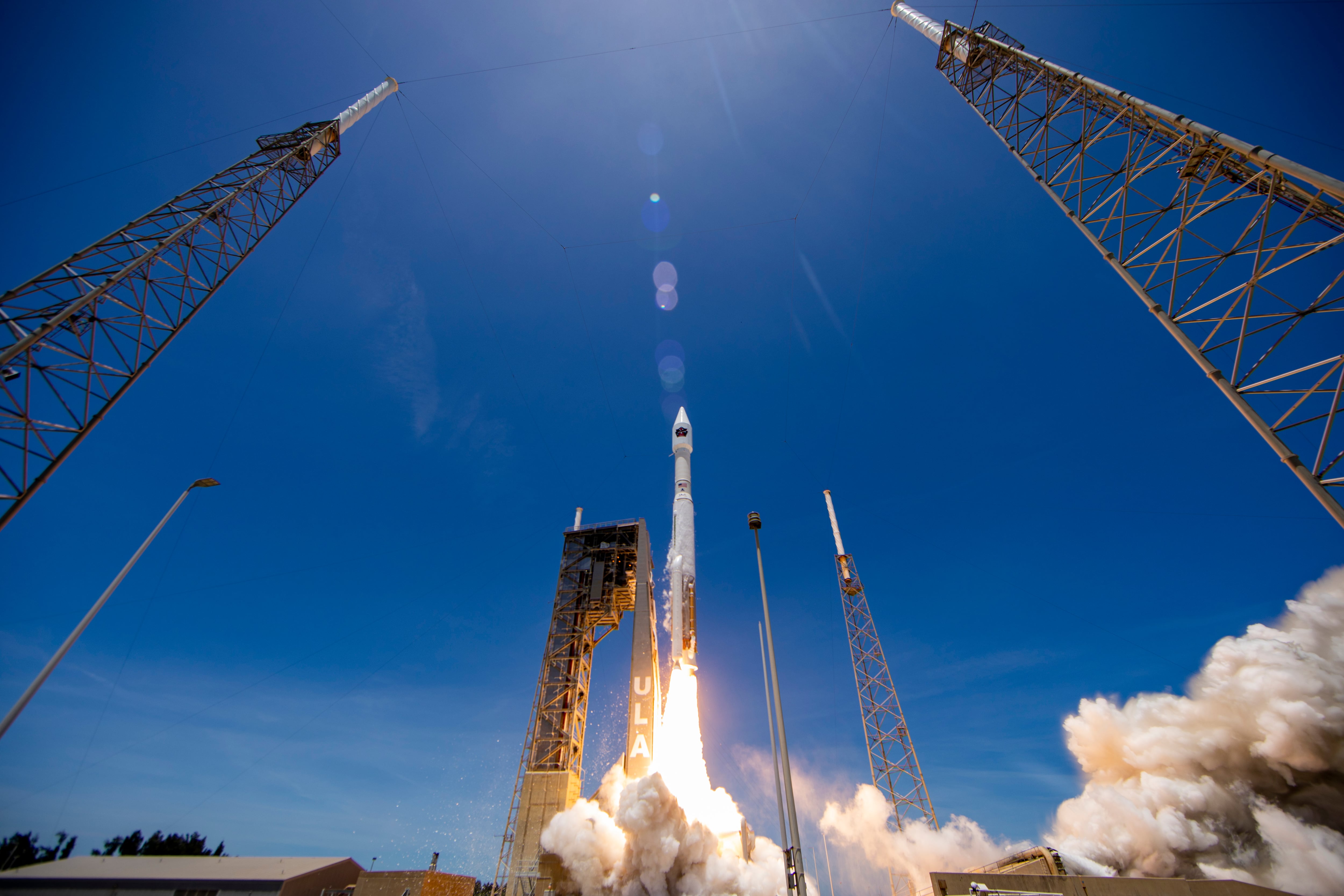WASHINGTON — If all goes as planned, the U.S. Space Force will have a complete constellation of Space-Based Infrared System satellites on orbit by Thursday, the culmination of an often fraught, decades-long effort to bolster the nation’s ability to detect and track missile threats from space.
The Lockheed Martin-built satellite is the sixth and final SBIRS vehicle to launch to geosynchronous orbit, about 22,000 miles above Earth. It’s slated to lift off at 6:29 a.m. Aug. 4 from Cape Canaveral Space Force Station in Florida. The satellite will fly on an Atlas V rocket built by space lift provider United Launch Alliance.
The mission comes amid a major transition for the service’s space-based missile warning systems. As adversaries including China and Russia develop hypersonic weapons that are harder to track than traditional ballistic missiles, the Space Force and other Pentagon agencies are crafting a strategy for detecting such threats. The vision is for an expanded architecture that reaches beyond the large GEO-based satellites such as SBIRS and draws on smaller space vehicles with advanced sensors operating in a more diverse range of orbits.
Col. Brian Denaro, program executive officer at Space Systems Command’s Space Sensing Directorate, said SBIRS will remain an important capability as the department diversifies. The key to countering more advanced missile threats, he said, will be ensuring that satellites and sensors are integrated.
“It is absolutely critical that our integrated family of systems that provides this overhead persistent infrared capability is not only able to detect the missiles, we’re able to track them throughout their flight and then report on those events on a timeline that’s relevant to being able to engage those targets,” he said during an Aug. 1 briefing for reporters.
“Whether that engagement means notification to the national command authorities to make very important decisions or notification to the Missile Defense Agency and all of its partners to be able to engage those targets, this is an integrated system of capabilities,” Denaro continued.
Overcoming early mistakes
The Department of Defense began building SBIRS in 1996 to replace the legacy Defense Support Program, which has been operating since the early 1970s.
The constellation today is made up of five satellites in GEO, each of which has a scanning sensor that continuously monitors the Earth and a staring sensor that provides more precise, targeted coverage of specific theater missions. It also includes two scanning sensor payloads hosted on classified satellites located in highly elliptical orbits that provide coverage of the polar regions.
The first SBIRS satellite arrived on orbit in 2011 — 15 years after the program’s inception and nine years later than its original 2002 launch target. The effort has become notorious for development challenges, schedule delays and cost overruns. From 1996 to 2020, the program’s total cost estimate ballooned to $20.3 billion from from $5.6 billion, a 260% increase, according to the Government Accountability Office.
The program’s ground processing and control system also faced major development roadblocks that delayed delivery of its full suite of capabilities until eight years after the first SBIRS satellite was launched.
GAO says SBIRS has largely overcome early development issues. The Space Force and Lockheed have also integrated more advanced capabilities on later-model satellites, including the company’s LM2100 satellite bus. The bus, incorporated on GEO-5 and 6, is cyber hardened, has greater power and uses common components that make it more efficient to build.

The fifth and sixth SBIRS GEO satellites were meant to replace older space vehicles that were designed with a 12-year service life. Col. Don Walter, senior materiel leader for SSC’s Missile Warning Acquisition Delta, said the early satellites will operate until they can no longer function, which could be much longer than planned.
Walter said that scenario works in the service’s advantage, explaining that having more satellites on orbit provides overlapping coverage, which increases accuracy.
“As we have launched more SBIRS into that GEO orbit, they work in concert with each other as a family of systems and are all integrated together on the ground in order to provide the effect that the warfighter needs,” he said during the briefing. “When you get multiple looks at a single launch, it really helps with the accuracy and assuredness.”
‘You have to have a bridging strategy’
As the Space Force plans new approaches to counter changing threats and incorporate technology advancements, officials say having a stable missile warning and tracking constellation in GEO is essential.
Chief of Space Operations Gen. Jay Raymond told reporters in April that the capabilities the service gains through SBIRS and through the Next-Generation Overhead Persistent Infrared program, which the Space Force will launch in 2025, are key during the transition.
The service laid out its near-term strategy in its fiscal 2022 budget proposal, requesting $3.4 billion to keep the Next-Generation OPIR satellites and ground system on schedule. It also proposed another $1.2 billion to continue developing more advanced satellites and ground systems to track hypersonic missiles from low and medium Earth orbits.
Having the baseline stability of the more traditional OPIR capabilities that come through SBIRS and Next-Generation OPIR allows the Space Force to experiment with new capabilities without sacrificing its mission.
“I think it’d be fair to say that we don’t have the luxury of going out to the world and saying we’re going to turn off all of these capabilities and we’ll come back in a few years with a bunch of new capabilities. You have to have a bridging strategy,” Raymond said during the annual Space Symposium in Colorado.
Michael Corriea, vice president of Lockheed’s overhead persistent infrared mission area, said in the briefing that the company’s work to upgrade SBIRS capabilities helps support that bridge strategy — especially since it’s under on contract to develop three GEO satellites for the Next-Generation OPIR constellation.
The incorporation of the LM2100 satellite bus and other workflow changes have not only introduced new technology to the program, but have helped the company move faster and learn from past challenges on SBIRS, Corriea said.
“The biggest thing for us has been trying out some of these new techniques in terms of going fast,” he said. “We tried those out for the first time on GEO-5 and made some tweaks on GEO-6 and are going to fold in the subsequent lessons learned on Next-Gen GEO to be able to pull as much time out of the schedule as we can.”
Courtney Albon is C4ISRNET’s space and emerging technology reporter. She has covered the U.S. military since 2012, with a focus on the Air Force and Space Force. She has reported on some of the Defense Department’s most significant acquisition, budget and policy challenges.








